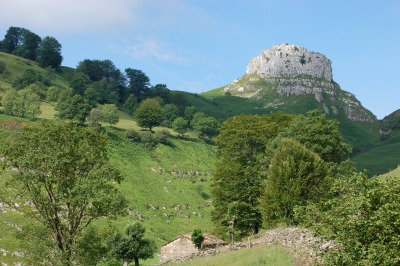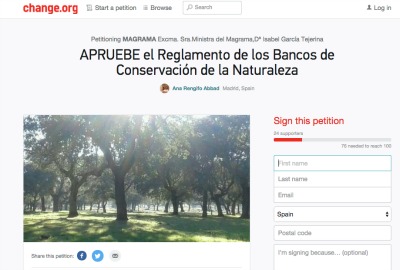This is a guest post by Mercados de Medio Ambiente, a platform for the promotion of environmental markets by Spanish consultancy ECOACSA.
This comment has previously been published on Mercados de Medio Ambiente. It is the expression of the author’s thoughts and experiences and as such is acknowledged as a fruitful contribution to the discussion on biodiversity offsets. If you want to react or clarify your own position (underpin or disprove) , please leave a reply below!
 The “Environmental Assessment Act”, passed in late 2013, introduced an interesting novelty in the field of biodiversity conservation: nature conservation banks . A tool that aims to implement a mechanism that contributes to the effectiveness of compensatory measures in Spain, at the same time provides opportunities for development in rural areas.
The “Environmental Assessment Act”, passed in late 2013, introduced an interesting novelty in the field of biodiversity conservation: nature conservation banks . A tool that aims to implement a mechanism that contributes to the effectiveness of compensatory measures in Spain, at the same time provides opportunities for development in rural areas.
Currently, the Ministry of Agriculture, Food and Environment (Magrama) is handling the normative development of conservation banks and since some associations of landowners and other organizations have launched an initiative to collect signatures in support of this model which aims to involve the private sector in the conservation of nature by developing actions to protect, improve or restore biodiversity in the long term, profitable and covered with ecological, legal and financial guarantees.
Why this interest in defending conservation banks? What exactly is this mechanism that pursues the conservation of our natural resources in time and effectively? Simply put, a conservation bank is an area where the protection, enhancement or restoration of threatened species and habitats, which is managed and maintained in the long term, is ensured. It is an instrument that guarantees the contribution of environmental wealth (or biodiversity) which is measured in the form of environmental credits. Environmental credits generated in a conservation bank can be purchased by operators or developers in order to offset unavoidable impacts on the same species or habitats for which the bank was created with the purpose that in the end a “net gain” of biodiversity is obtained.
Conservation banks allow compensatory measures in projects that adversely affect biodiversity to meet the legal environmental requirements through environmental credits. They also ensure the conservation of these natural values generated, and provide environmental, legal and financial actions related to the conservation measures. Conservation banks have significant benefits for society and administration, allowing the implementation of compensation measures that are real, effective and integrated into spatial plans and strategies for biodiversity conservation. They are a tool for the care and sustenance of ecosystems, which enables businesses and landowners involved in the conservation of the natural environment to make the commitment to care for nature profitable and to boost job creation.
Conservation banks are not tools that support the development of harmful activities for nature, in contrast, they allow for the compensation of environmental damage through adequate restoration measures (biodiversity offsets). This is the last step in the chain of mitigating damage to biodiversity (mitigation hierarchy) and is to be realized in an environmentally beneficial manner.
With the arrival of conservation banks, promoters of activities that impact on biodiversity will have the continuing obligation to avoid, minimize and repair the impacts. In addition, environmental compensation (i.e. biodiversity offsets) that are carried for the the damage that can not be repaired or restored, can be developed environmentally sound and guarantee conservation.
There are numerous benefits from this tool. In order to ensure that its regulations incorporate the key elements to provide that all procedures involved are rigorous, transparent and effective, some landowners and rural associations and other organizations have launched a manifesto to support the policy development for conservation banks. They request the following:
Manifesto for the regulatory development for nature conservation banks.
We, the signatories wish to express our position in favor of a regulatory development for nature conservation banks in Spain and express the essential elements that such regulation should incorporate.
In this context, we understand that that regulatory development must contain at least the following references:
- Compliance with the principles of the mitigation hierarchy, so that:
-
in environmental assessment processes there is a clear identification of residual environmental impacts;
-
natural compensation measures (same natural values) are required to offset these impacts;
-
the decision on the viability of projects is independent of the chosen type of (corrective or compensatory) measures;
-
in the event that the project is considered environmentally viable, credits from conservation banks are only used to offset the residual environmental impacts.
- Technical criteria for credit allocation and simple, transparent and technically and scientifically sound calculation of residual environmental impacts.
- Transparency and legal certainty for all parties, developers, landowners and administration.
- Guaranteed evaluation by independent third parties.
- Administrative support seizing the opportunities of community funding.
This manifesto will be endorsed by all those who want to sign it on social networks, the signatures will be forwarded to the ministry (Magrama) electronically. To adhere to the manifesto simply click here and sign the online petition.

